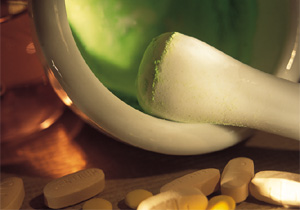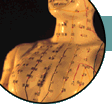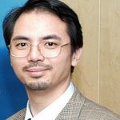Differentiating Lung Syndromes
Qi Deficient of the Lung
Feeble coughing, shortness of breath, clear and thin sputum, feeble breathing, speaking in a low voice, spontaneous sweating, pale and lusterless complexion, lassitude, pale tongue proper with thin white coating, xu and forceless pulse.
The lung dominates qi and controls respiration, so qi deficiency causes a weak cough, shortness of breath, and feeble breathing. Qi deficiency of the lung also leads to a failure of lung qi descent causing an accumulation of body fluid with resulting phlegm. There are also symptoms of cough with thing sputum, spontaneous sweating, pale and lusterless complexion, lassitude, pale tongue proper with white and this tongue coating, and xu type pulse.
Yin deficiency of the lung
Dry cough without sputum or with a little sticky sputum, dryness of the mouth and throat, hoarseness of voice, emaciation, dry red tongue proper, thready and forceless pulse. If yin deficiency leads to a preponderance of fire, there may be cough with bloody sputum, tidal fever, night sweating, malar flush, red tongue proper, and a thready rapid pulse.
The symptoms of lung yin deficiency are actually the manifestations of an insufficiency of lung yin fluid, i.e., dry cough without sputum, or cough with a little stick sputum, dryness of the mouth and throat, hoarseness of voice, emaciation, dry red tongue proper, thready and forceless pulse. If yin xu fails to restrict yang, then xu fire is formed and flares up to the damage the vessels of the lung, producing the symptoms of tidal fever, night sweating, malar flush, hematesis, red tongue proper, thready rapid pulse.
Lung wind-cold retention syndromes
Cough, asthma, thin white sputum, absence of thirst, nasal obstruction, runny nose, chills and fever, no sweating, pain of the head and body, thin white tongue coating, superficial and tense pulse.
Exogenous pathogenic wind-cold obstructing the lung leads to the dysfunction of lung qi spreading and descending, causing symptoms of cough with thin white sputum. The lung opens into the nose, which is then also troubled by nasal obstruction or discharge. The lung dominates the skin and hair, when exogenous pathogenic wind and cold invade the lung leading to the dysfunction of defensive (wei) qi, the symptoms are an aversion to cold, fever, pain of the head and body, absence of sweat, thin white tongue coating.
Lung win-heat invasion syndromes
Cough with yellowish and thick sputum, thirst, sore throat headache, fever, aversion to wind, yellowish and thin tongue coating, floating and rapid pulse.
The lung is attacked by exogenous pathogenic wind-heat, so the spreading and descending functions are affected, causing cough with a yellowish and thick sputum. Pathogenic heat consumes the body fluid, causing thirst. Wind and heat flow upward to cause a sore throat. Headache, fever, aversion to wind, yellowish and thin tongue coating, floating and rapid pulse are signs indicating wind-heat invasion of the defensive (wei) qi of the body surface.
Lung phlegm damp obstruction syndromes
Cough with excessive and white sticky sputum, expectoration, stuffiness of the chest, asthma, white sticky tongue coating, slippery pulse.
Pathogenic phlegm damp obstructing the lung leads to the impairment of qi circulation causing the above symptoms. White sticky tongue coating and slippery pulse are signs of pathogenic phlegm damp.
A long-standing obstruction of phlegm damp in the lung will change into heat, blocking qi circulation and manifesting as asthmatic cough, stuffiness of the chest, etc. In addition, other symptoms may occur, such as cough with yellowish, sticky and thick sputum, or cough with bloody and pussy sputum. Fever, thirst, yellowish urine, constipation, red tongue proper with yellow sticky coating, and slippery pulse, are signs of heat syndromes.
Related Subjects
Read more on description of the main syndromes of other zang-fu organs:
Heart,
Liver,
Spleen,
Kidney,
Small Intestine,
Large Intestine,
Urinary Bladder,
Stomach, and
Gall Bladder.
|

 This website is published, edited and designed by Raymond Cheng,
and reflects only and only his personal views and opinions in his individual capacity.
The information available at this website is not intended
directly or by implication to either diagnose or treat any
medical, emotional, or psychological condition or disorder.
It is also not intended to create a physician-patient relationship
between you and I or between you and Wyith Institute™ and The Office of Dr Raymond K K Cheng.
The information here is not a substitute for advice and treatment provided
by your physician or by another healthcare professional.
It is always recommended that consultation with local healthcare providers
be obtained for any of your specific health or medical concerns.
Furthermore, any products that can be purchased (yet you can see I don't have much
to sell here) through advertisers' banners or through links to other websites
are not either explicitly or implicitly given any warranty or endorsement
by me, my colleagues, Wyith Institute™ or any of its associated businesses.
This website is published, edited and designed by Raymond Cheng,
and reflects only and only his personal views and opinions in his individual capacity.
The information available at this website is not intended
directly or by implication to either diagnose or treat any
medical, emotional, or psychological condition or disorder.
It is also not intended to create a physician-patient relationship
between you and I or between you and Wyith Institute™ and The Office of Dr Raymond K K Cheng.
The information here is not a substitute for advice and treatment provided
by your physician or by another healthcare professional.
It is always recommended that consultation with local healthcare providers
be obtained for any of your specific health or medical concerns.
Furthermore, any products that can be purchased (yet you can see I don't have much
to sell here) through advertisers' banners or through links to other websites
are not either explicitly or implicitly given any warranty or endorsement
by me, my colleagues, Wyith Institute™ or any of its associated businesses.



 Thank you for visiting this TCM and acupuncture information website.
If you have previously been to this website, you might have
noticed that some of the pages on ancient historical ideas and
holistic thinkings related to Chinese metaphysics are temporarily taken offline.
This is because I will be revamping the whole website and be moving
those information into a new \"Ancient Chinese Culture\" section
so as to reflect a more current perspective on the interpretation
of some of the fundamental concepts as well as to include
some of the latest information in the area.
But if you have just found this website for the very first time, I welcome you again and
wish you could find what you require and, hopefully, you could also be benefitted
from reading the articles I published on this website.
Thank you for visiting this TCM and acupuncture information website.
If you have previously been to this website, you might have
noticed that some of the pages on ancient historical ideas and
holistic thinkings related to Chinese metaphysics are temporarily taken offline.
This is because I will be revamping the whole website and be moving
those information into a new \"Ancient Chinese Culture\" section
so as to reflect a more current perspective on the interpretation
of some of the fundamental concepts as well as to include
some of the latest information in the area.
But if you have just found this website for the very first time, I welcome you again and
wish you could find what you require and, hopefully, you could also be benefitted
from reading the articles I published on this website.